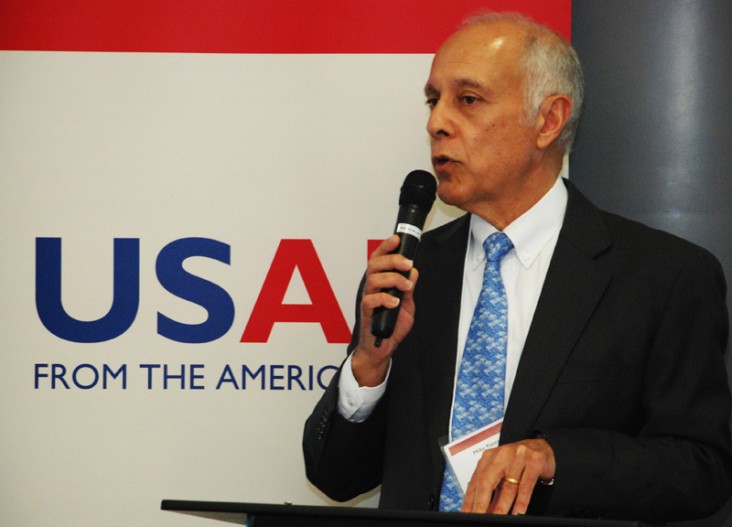
It is my great pleasure to welcome you to Bangkok for the Asia Urban Futures Workshop.
I’d like to start by giving special thanks to our partners at UNDP, UN Habitat and UN Global Pulse, as well as to the USAID staff in Bangkok and Washington’s Global Development Lab who all worked so hard to make this Conference a reality. They’ve brought together two groups of key people who don’t get a chance to talk with one another as much as they might: first, outstanding experts from the technology and development fields; and second, city leaders and planners. I’m sure both will learn much from one another over the next couple of days about dealing with the challenges and opportunities with a rapidly urbanizing Asia.
And rapidly urbanizing it is! In the last two decades the Asia-Pacific region’s urban population increased by 29 percent, faster than any other region of the world – with much of that urban growth in areas highly vulnerable to the negative effects of climate change. It is hard to envision sustainable development in Asia without taking into account the magnitude of that transformation.
The areas of focus for this workshop – urbanization, resilience and science and technology – are important for USAID, and for the region. We will explore how futures analysis – a broad set of analytical techniques including forecasting, scenario planning and visioning – can be used to inform development planning and build urban resilience.
This is increasingly important for us all. Last year USAID issued a policy entitled "Sustainable Service Delivery in an Increasingly Urbanized World." And although urbanization presents challenges, it also presents great opportunities to capitalize on economies of scale and build more efficient systems.
Under this policy, we work with city leaders and planners to help them better prepare for uncertainties and put in place systems to cope with challenges while still striving to achieve their full economic potential. Things like accountable service delivery models and increased public-private collaboration can strengthen municipal resilience – and that will help urban Asia be better prepared to meet, and to shape, the future.
During this workshop, we will learn about innovative work being done across the region and discuss opportunities to scale-up success. For example, you will hear about USAID’s Mekong-Building Resilience to Climate Change in Asia’s Cities program, which builds on previous work funded by the Rockefeller Foundation. It addresses climate change resilience in the context of rapid urbanization by focusing on governance and on the use of scenario planning as a decision-support tool for policymakers. It is a good example of how we can work and learn together and build on each other’s success.
USAID sees Resilience as a vital framework, worldwide, to lessen the impacts of disasters, alleviate poverty and promote more sustainable development.
Through our partnership in the Urban Climate Change Resilience Trust Fund we are working with the Asian Development Bank, Rockefeller Foundation, the Department for International Development for the UK (DFID) and the Cities Development Initiative for Asia to help medium-sized cities build resilience to the effects of climate change and climate variability by leveraging $1 billion in investments from public, private and municipal sources.
Additionally, through the new Global Resilience Partnership (GRP), USAID, the Rockefeller Foundation and the Swedish International Development Cooperation Agency, will collectively invest $150 million to increase global resilience and mobilize regional collaboration to build stronger and more resilient futures – including by promoting promising technologies.
And Asia’s strong science and technology capacity will be essential in helping it to address the region’s most critical development challenges, including building sustainable and resilient cities.
USAID’s commitment to science and technology is embodied in the establishment earlier this year of the Global Development Lab, which seeks to harness the power of science, technology, innovation and partnership to more efficiently and effectively address development challenges.
One of our science and technology priorities is supporting the use of robust data and analytics to inform decision-making. Futures analysis is an important tool in the development toolbox that can help us make smarter decisions by thinking through and planning for possible future scenarios. This workshop will highlight a variety of examples of how futures analyses can be used, and we hope this will help to further mainstream these techniques into core development practices.
We are delighted to see so many people from across Asia and beyond here to learn from one another how we might best deploy these techniques to do development better.
And one final number or two, if I may: In 2014, 54 percent of the world’s population was living in urban areas – up from only 34 percent in 1960. Some of us were born before then and I note that to emphasize the great urgency we all face in addressing the transformational challenges of urbanization and our increasingly urban futures. Together, we can partner to help shape the solutions to the challenges of tomorrow.
Thanks for your active participation!
Related Speeches
- 6th Mara Day Celebration - Remarks by Brad Arsenault, Deputy Director for East Africa and Operations, Environment Office, USAID Kenya and East Africa
- Remarks by Ms. Polly Dunford, Mission Director, USAID Cambodia, Handover of Forest Community Patrol Equipment
- Remarks by Menglim Kim, Project Management Specialist, USAID Cambodia, National Reflection and Learning Meeting Sub-National Authority and Community Engagement for Improved Natural Resource Governance and Practices







Comment
Make a general inquiry or suggest an improvement.